100 Meters Anime Film Director Kenji Iwaisawa's Attention to Detail Puts Artistic Originality First
by Kalai Chik,Six years ago, Kenji Iwaisawa took the world by surprise with his hilariously charming adaptation of Hiroyuki Ohashi's ON-GAKU. Now, with a larger budget and a team of industry professionals, Iwaisawa has taken on the challenge of adapting Uoto's 100 Meters as his latest film. The fast-paced movie displays exhilarating animated sequences that keep audiences on the edge of their seat. Iwaisawa's attention to natural movement and his team's stylistic take on the camera angles help to visually elevate the movie's message about chasing one's passion. Anime News Network spoke with Iwaisawa before the movie's U.S. release on October 10, 2025.
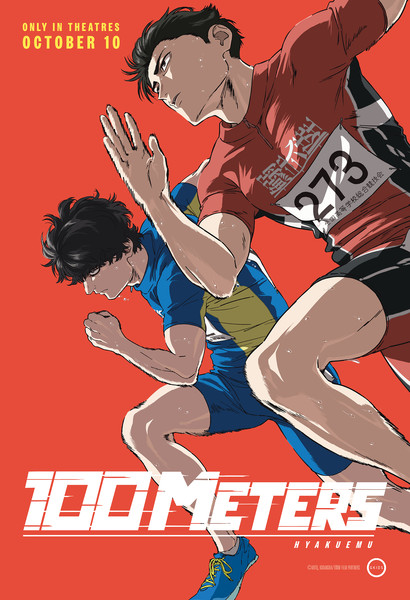
When you worked on ON-GAKU: Our Sound, you mentioned you had almost no experience in animation, and your team was also largely inexperienced. For 100 Meters, you worked with a professional team. How did working with this team change you as a director?
Kenji Iwaisawa: We actually had both new staff and professional staff on 100 Meters, so it was a hybrid blend of rookie and veteran staff. As a director, I learned that the professionals had their own workflows. I learned whether it matched my working style, but ultimately, gaining experience working with such professionals helped develop my skills as a director.
Between working on an independent film and a bigger-budget film, what's an aspect of making an animated film that doesn't change even with more resources and money?
IWAISAWA: As a director, when I completed 100 Meters, the process of filmmaking and the style remained the same. The only difference is how much I would draw over how much other people would draw.
You largely drew and worked on many of the scenes in ON-GAKU: Our Sound. What's an aspect of 100 Meters that you had to work on and couldn't give to someone else?
IWAISAWA: In 100 Meters, I didn't draw anything involving the characters. However, during the rain sequence, the background is hand-drawn, and all the trees are something I did myself. I don't think I could've asked anyone else to work on that since it was difficult.
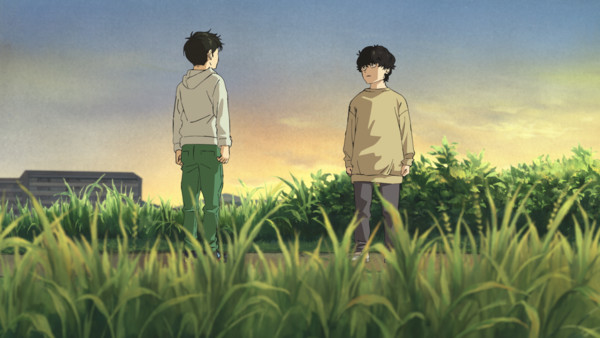
I read that it took you almost a year to work on the 3-minute, 40-second one-take rain sequence, which was completed close to the film's release. Why did you decide on this time-intensive one-take scene to be in the middle when sometimes they are saved until the end?
IWAISAWA: In the original, the rain scene is also in the middle of the story. I wanted to bring it up as a mid-film highlight. That scene was the first that came to mind when I started working on this project, because it's before the actual race. I was able to put so much time and energy into that sequence.
Similar to ON-GAKU: Our Sound, the movie also changes its style throughout. Did you establish these styles first and then give them to the animation team? Or did you brainstorm the different styles based on the mood of the scene?
IWAISAWA: I would come up with many of the style changes myself and tell the animators. However, if there were an animator with a unique style, I would leave it up to them and try to find a scene that would match their style.
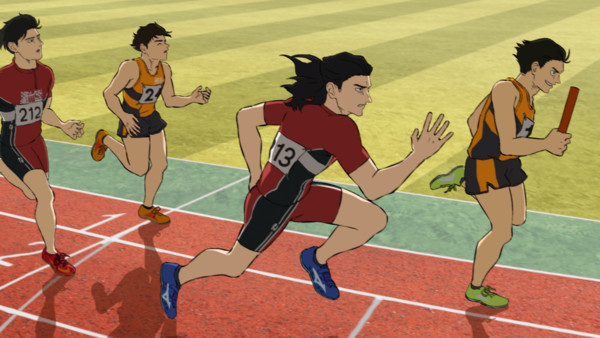
Although 100 Meters isn't a movie that centralizes on music, sound and melodies make up an important portion of the movie, especially during the exciting running scenes. How did you work with Hiroaki Tsutsumi on the film's score?
IWAISAWA: With Tsutsumi-san, I asked him to make the main theme of the movie, which turned out to be “100 Meters.” It might have seemed strange for me to ask the composer to come up with the main theme first. He had other options to use as the main theme; those pieces we were able to use in other parts of the film, like the relay. I went to his studio to discuss what kind of music I wanted, and he'd play something. I'd then ask him to make changes here and there. I also asked him to create pieces that would stand out and leave a lasting impression on the audience.
You've said you're drawn to animations with “unnecessary movements” and that you take some references from the actors. Were there any moments from the recording booths that you integrated into the animation?
IWAISAWA: The actors themselves thought about how the characters would move. The method of rotoscoping added more depth to the characters because it allowed them to blend well with how the actors portrayed them.
There are a lot of parallels that a viewer can see between the passions and frustrations the characters have for running to drawing and artistry. When you read the dialogue between the characters, did you feel similar about your passion for filmmaking?
IWAISAWA: When I first read the manga, the dialogue stood out because it's very much Uoto's style. I was more drawn to how the characters would express themselves through certain words. At this moment, I can't think of any parallels to myself. I don't think as deeply as the characters.
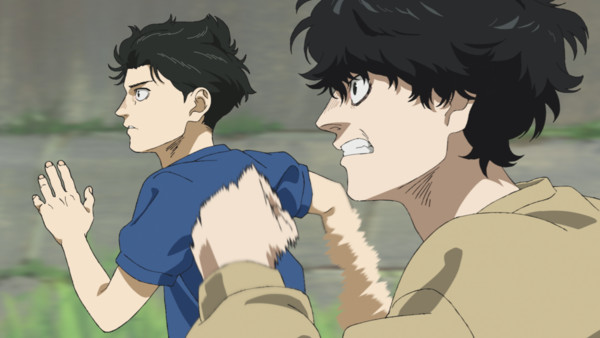
What involvement did author Uoto have with this film? What suggestions did Uoto have during production?
IWAISAWA: He was more involved in the scriptwriting process, and we had an outline of how the movie would go. We presented it to him and he gave his feedback. He was particular about the dialogue and the nuances it would convey.
Uoto's designs for 100 Meters were already very handsome to begin with, but the movie takes it to a new level with Keisuke Kojima's designs. How did you collaborate with him to incorporate those designs into the movie as the characters aged?
IWAISAWA: I left a lot of it to Kojima-san, as he incorporated the manga designs and considered how they would best be expressed in animation. I did tell him not to make them look like the bishounen you would see in a typical anime, and instead, to make them more realistic.
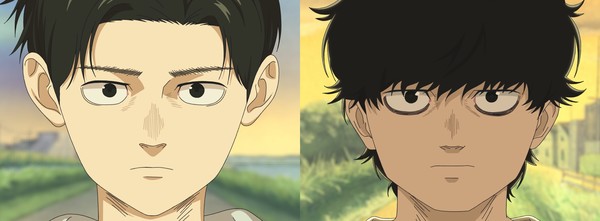
Which character in 100 Meters do you feel most similar to?
IWAISAWA: I don't know if I'm most similar to him, but the one I like is Kaido.
discuss this in the forum (1 post) |